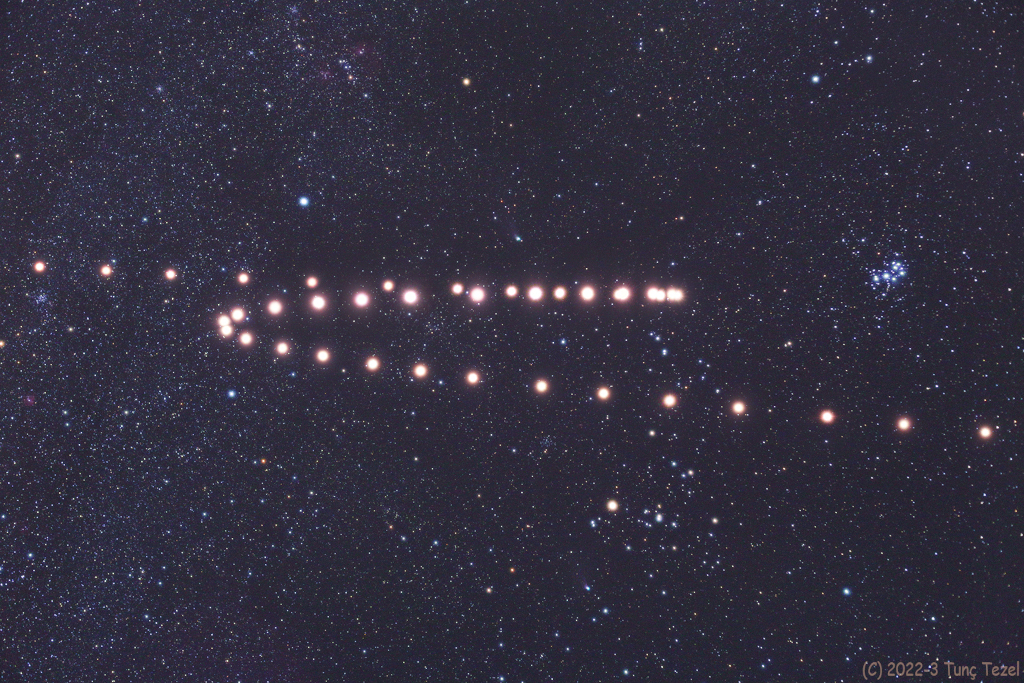2023年4月15日
When Z is for Mars
Image Credit & Copyright: Tunc Tezel (TWAN)
Explanation: A composite of images captured about a week apart from mid August 2022 through late March 2023, this series traces the retrograde motion of ruddy-colored Mars. Progressing from lower right to upper left Mars makes a Z-shaped path as it wanders past the Pleiades and Hyades star clusters, through the constellation Taurus in planet Earth’s night sky. Seen about every two years, Mars doesn’t actually reverse the direction of its orbit to trace out the Z-shape though. Instead, the apparent backwards or retrograde motion with respect to the background stars is a reflection of the orbital motion of Earth itself. Retrograde motion can be seen each time Earth overtakes and laps planets orbiting farther from the Sun, the Earth moving more rapidly through its own relatively close-in orbit. High in northern hemisphere skies the Red Planet was opposite the Sun and at its closest and brightest on December 8, near the center of the frame. Seen close to Mars, a popular visitor to the inner Solar System, comet ZTF (C/2022 E3), was also captured on two dates, February 10 and February 16.
Tomorrow’s picture: winging it
火星的Z字形逆行轨迹
影像提供与版权: Tunc Tezel (TWAN)
说明: 这幅影像是由一系列间隔一周的照片组合而成,以呈现赤红火星在2022年8月中旬到2023年3月下旬之间的逆行运动。从右下到左上,当火星通过金牛座的昴宿星团和毕宿星团时,在地球的夜空中留下了Z字形的轨迹。火星并没有真的在轨道上倒着走,只是因为地球本身也在进行轨道运动,所以从地球看出去,火星相对于背景恒星看似在倒退或逆行运动。这种逆行运动每隔大约两年会见到一次。当地球追过离太阳较远的行星时,因为地球在较邻近太阳的轨道上运行速度较快,所以得以看到逆行的现象。在影像中心附近,高悬在北半球夜空中的火星于12月8日位在与太阳反向的冲附近,因此是离地球最近且最明亮的时候。此外,在火星附近,还可见到太阳系内围备受关注的访客——ZTF彗星(C/2022 E3),其身影分别出现在2月10日和2月16日这两天。
明日的图片: winging it



